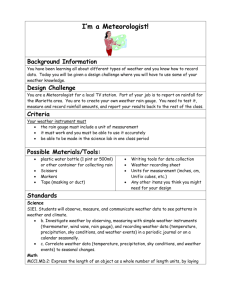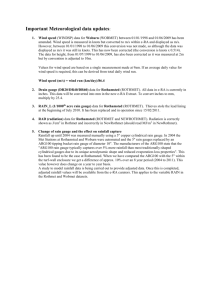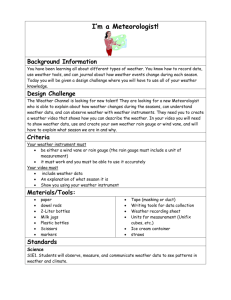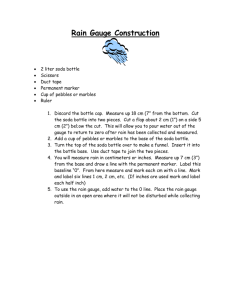Rainfall Measurement
advertisement
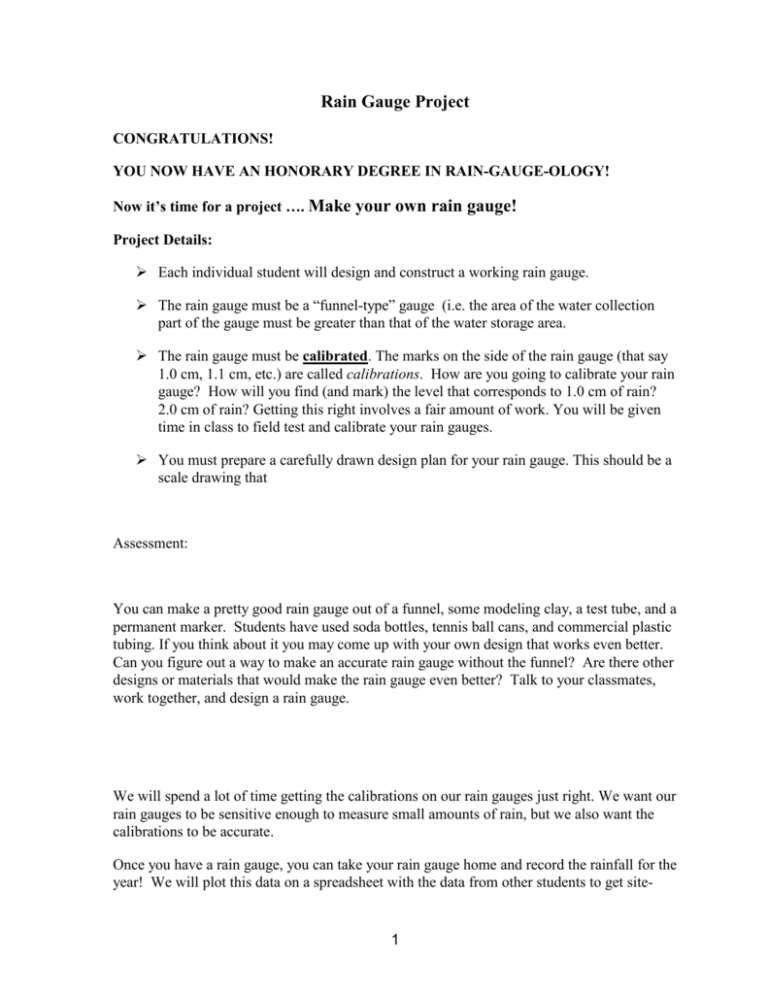
Rain Gauge Project CONGRATULATIONS! YOU NOW HAVE AN HONORARY DEGREE IN RAIN-GAUGE-OLOGY! Now it’s time for a project …. Make your own rain gauge! Project Details: Each individual student will design and construct a working rain gauge. The rain gauge must be a “funnel-type” gauge (i.e. the area of the water collection part of the gauge must be greater than that of the water storage area. The rain gauge must be calibrated. The marks on the side of the rain gauge (that say 1.0 cm, 1.1 cm, etc.) are called calibrations. How are you going to calibrate your rain gauge? How will you find (and mark) the level that corresponds to 1.0 cm of rain? 2.0 cm of rain? Getting this right involves a fair amount of work. You will be given time in class to field test and calibrate your rain gauges. You must prepare a carefully drawn design plan for your rain gauge. This should be a scale drawing that Assessment: You can make a pretty good rain gauge out of a funnel, some modeling clay, a test tube, and a permanent marker. Students have used soda bottles, tennis ball cans, and commercial plastic tubing. If you think about it you may come up with your own design that works even better. Can you figure out a way to make an accurate rain gauge without the funnel? Are there other designs or materials that would make the rain gauge even better? Talk to your classmates, work together, and design a rain gauge. We will spend a lot of time getting the calibrations on our rain gauges just right. We want our rain gauges to be sensitive enough to measure small amounts of rain, but we also want the calibrations to be accurate. Once you have a rain gauge, you can take your rain gauge home and record the rainfall for the year! We will plot this data on a spreadsheet with the data from other students to get site- 1 specific detail. Later we may look for relationships between this data and other measurements taken from local rivers and streams. You are now officially a scientist!!! 2


